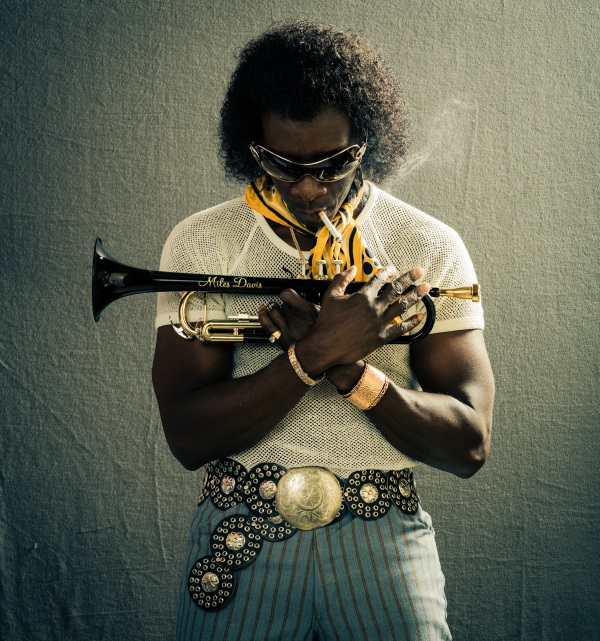NEW YORKER: Davis’s life, in his own telling, is a trouble-filled adventure, in which racism and drugs, hedonism and violence, artistic vision and brute desire are intertwined. The hardest thing for an artistic biography to accomplish is to associate the art with the life without reducing the pure artistic drive to psychological and sociological determinism. Even though “Miles Ahead” fails in this regard, I have sympathy for Cheadle’s odd uses of some of Davis’s greatest music. For instance, Davis’s violent fight with Taylor is depicted as occurring while the other four members of Davis’s superb “second quintet” are rehearsing in the basement; the effect is to associate the saxophonist Wayne Shorter’s composition “Nefertiti” with domestic violence. Similarly, a snippet of a heavily electric and percussive performance of the sort that Davis was giving in 1974-75 is used as the soundtrack for the car chase and shootout.
Even though these scenes cheapen and reduce the music to mere atmospherics, they make a significant point, one that is all too often lost in the romanticism of artistic creation: great artists whose lives are filled with trouble, including of their own making, aren’t great artists despite such behavior and experiences but, rather, in inseparable relation to it. The long-standing desire of art lovers to separate the art from the artist, to appreciate the work while disdaining the behavior, reflects the kind of fastidious oversimplification that good artists avoid. The messy complexity of character and of the world at large, the expression of realms of experience that most prudent spectators or readers would rather avoid, is precisely what the best art embodies. Artists’ turbulent lives are their very stock in trade, and if they were purified to fit the moral standards of Supreme Court nominees art itself would be the poorer for it. Nisenson’s use of the word “inexcusable” is exactly right. It’s almost unbearable to consider the creator of great beauty to be responsible for actions of great ugliness. That’s why Cheadle and the other writers, in their extreme filtering and altering of Davis’s experiences and actions, do his art no favors but, rather, an injustice.
Yet the fact remains: Cheadle is a majestic performer, whose acting captures something of Davis’s fierce, proud, volatile radiance. Though much of Cheadle’s direction is photographically undistinguished, the one figure of style that stands out is his close-ups of himself as Davis. They suggest no vanity or actorly preening but a keen self-awareness—and understanding of Davis—through the lens. Like Davis, Cheadle is complete in repose; Davis’s existential force emerges fully through the still frame of a single photograph, and Cheadle embodies it vitally. It’s precisely the actor’s own power to incarnate Davis as one artist to another that makes the movie’s reliance on artificial dramatic conventions unnecessary, even absurd. Davis is a drama unto himself, and to bring it into being Cheadle doesn’t have to do anything but be there. MORE

